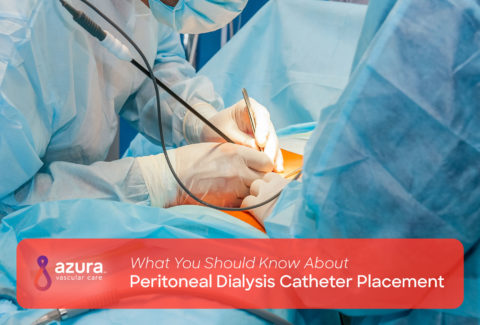
Pets bring us great comfort in life, particularly in times of illness. However, if you’re undergoing peritoneal dialysis and pets are in your home, you might want to take a few extra precautions to keep yourself healthy. i
The Concern with Peritoneal Dialysis and Pets

While serious infections in Peritoneal Dialysis (PD) patients have been linked to pets, cases are rare. So don’t worry, you don’t need to get rid of your furry friend. But, it’s smart to educate yourself on the link between peritoneal dialysis, pets and infection so you can better protect your health.
If you have pets and are receiving dialysis, the following bacteria species are of particular importance:
- Pasteurella multocida – found in the mouth and upper respiratory tract of cats and dogs.
- Capnocytophaga – this bacterium is normally found in dogs, and to a lesser degree, cats. ii
Understanding Pasteurella multocida
This bacterium is zoonotic, meaning it can be transmitted from animals to people and can cause:
- Septicemia – a life-threatening infection of the blood
- Cellulitis – a swelling, redness, warmth and tenderness of the skin typically caused by a bite
- Lung infections – including pneumonia
- Meningitis – an infection of the membranes that surround and protect your brain and spinal cord
- Peritonitis – an inflammation of the peritoneal membrane, or the lining of the belly. Although the occurrence of peritonitis from this cause is rare, most often it occurs when there is a cat in the household ii
Are Cats More of a Concern?
 Roughly one out of five cats has Pasteurella species on its claws.iii In general, cats:
Roughly one out of five cats has Pasteurella species on its claws.iii In general, cats:
- Are prone to play with your PD tubing
- Have sharper teeth and claws that are more likely to puncture dialysis tubing or bags
- Groom themselves more thoroughly and regularly than dogs, which can result in them transferring bacteria
Like Pasteurella multocida, the Capnocytophaga bacteria can cause septicemia and meningitis. However, they can also cause:
- Osteomyelitis – an infection of the bone or bone marrow
- Purulent arthritis – a joint infection
- Endocarditis – an infection of the inner lining of your heart
- Peritonitis – inflammation of the belly lining caused by a bacterial infection iv
Peritonitis, while rarer than some of the other infections, is of particular importance if you are receiving PD. v
Infections caused by the Capnocytophaga species of bacteria are transmitted primarily through a dog bite, although rare cases have been linked to cats.
Living Well with Peritoneal Dialysis and Pets
Keep in mind, serious infections transmitted from pets to patients undergoing PD are rare.
Having a pet is usually not a problem for PD patients. However, if you have a pet – particularly a pet cat – you should take extra precautions to ensure that your pet’s saliva, claws and fur do not come into contact with your access site or dialysis equipment.

Here are a few simple and easy precautions you can take to prevent infection and stay healthy and happy with your furry friend. You’ll always want to:
- Wash your hands with soap and warm water before touching your access site
- Wash your hands with soap and warm water before and after each step of your PD treatment
- Wash your hands after petting or playing with your cat or dog
- Don’t let your cat or dog chew on your dialysis equipment
- Don’t let your cat or dog touch your access site
- Keep your home free of cat and dog fur
- Wash your hands with soap and warm water after cleaning your pet’s food and water dishes or after changing a litter box
RELATED: Everything You Need to Know About a Peritoneal Dialysis Catheter
Remember, if you have peritoneal dialysis and pets you don’t need to get rid of your little furry friends just because you’re receiving dialysis, but it’s a good idea to review your hygiene protocols with your healthcare team from time to time, particularly if anything in your household changes.
Sources:
i Salim, Y., Sathianathan, C., Murray, B.-L., Alfa, M. J. (2013) Pets are ‘riskybusiness’ for patients undergoing continuous ambulatory peritoneal dialysis. Canadian Journal of Infectious Diseases and Medical Microbilogy, 24(3): 96–¬98.
ii Mugambi, S. M., Ullian, M. E. (2010) Bacteremia, sepsis, and peritonitis with Pasteurella multocida in a peritoneal dialysis patient. Peritoneal Dialysis International, 30: 381–3.
iii Satomura, A., Yanai, M., Fujita, T., et al. (2010) Peritonitis associated with Pasteurella multocida: Molecular evidence of zoonotic etiology. Therapeutic Apheresis Dialysis, 14: 373–6.
iv Gaastra, W., Lipman, L.J. (2010) Capnocytophaga canimorsus. Veterinary Microbiology, 140: 339–46.
v Chow, K.M., Pang, W.F., Szeto, C.C., Li, P.K. (2010) Playing cat and mouse with a gram-negative organism causing peritonitis. Peritoneal Dialysis International, 30: 662–3.


